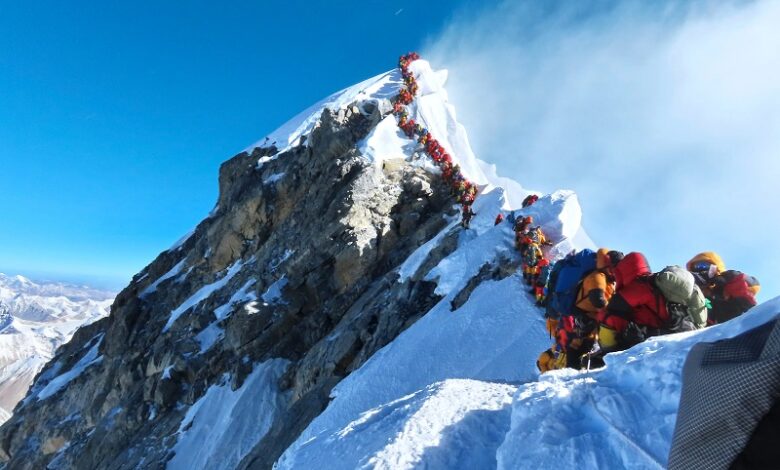The Deadly Allure of Mount Everest: Why the World’s Highest Peak Claims So Many Lives

News Mania Desk/Agnibeena Ghosh/3rd June 2024
Mount Everest, the tallest peak on Earth at 29,032 feet (8,849 meters), is a magnet for climbers from around the globe, all drawn by the allure of standing atop the world. However, this dream comes with a deadly price. Since the first successful ascent by Sir Edmund Hillary and Tenzing Norgay in 1953, over 300 climbers have lost their lives attempting to reach the summit. But what makes Mount Everest so perilous?
One of the primary reasons Everest is so deadly is the extreme altitude. Above 8,000 meters, climbers enter what is known as the “death zone,” where the amount of oxygen is insufficient to sustain human life for long. In this zone, the body begins to deteriorate, and even with supplemental oxygen, climbers experience severe hypoxia, leading to confusion, lack of coordination, and impaired decision-making. Many climbers have succumbed to altitude sickness, a condition that can escalate rapidly into pulmonary or cerebral edema, both of which can be fatal if not treated immediately.
Weather conditions on Everest are notoriously unpredictable and can change within minutes. Sudden storms, high winds, and extreme cold can trap climbers in deadly situations. The combination of freezing temperatures and high winds can cause frostbite and hypothermia, both of which can be fatal. In May 1996, a sudden storm resulted in the death of eight climbers, marking one of the deadliest days on Everest. The unpredictable weather makes it difficult to plan safe ascents and descents, contributing to the high fatality rate.
The physical demands of climbing Everest are immense. The climb involves navigating through the Khumbu Icefall, a treacherous maze of ice towers and crevasses that shifts and moves constantly. Climbers must also tackle steep, icy slopes and the infamous Hillary Step, a near-vertical rock face just below the summit. These physical challenges require peak fitness and stamina, and even the most experienced climbers can be caught off guard by the sheer difficulty of the ascent.
Mount Everest’s popularity has also led to overcrowding, which has become a significant issue in recent years. During the short climbing season, hundreds of climbers can be found on the mountain, leading to bottlenecks at critical points like the Hillary Step. These traffic jams not only slow progress but also increase the time spent in the death zone, heightening the risk of altitude sickness and exposure. The overcrowding also strains resources, such as oxygen supplies and rescue operations, making it harder to respond to emergencies promptly.
Avalanches and falls are other common hazards on Everest. The mountain’s steep slopes and unstable ice formations can give way without warning, burying climbers under tons of snow and ice. In 2014, an avalanche in the Khumbu Icefall killed 16 Sherpas, highlighting the constant danger of falling ice and snow. Falls from high altitudes can also be fatal, as climbers traverse narrow, exposed ridges and ice faces.
The human body is not designed to function at the extreme altitudes found on Everest, and the mountain’s challenges are exacerbated by the harsh environment. Dehydration, frostbite, and hypothermia are constant threats. The lack of proper medical facilities and the difficulty of performing rescues in such a remote and inhospitable environment mean that even minor injuries can quickly become life-threatening.
Despite these dangers, the allure of climbing Everest remains strong. The mountain represents the ultimate test of endurance and determination, and for many climbers, reaching the summit is a lifelong dream. However, the risks are significant, and the high fatality rate serves as a sobering reminder of the dangers inherent in climbing the world’s tallest peak. Those who attempt the climb must be prepared for the physical and mental challenges and accept the potential consequences of their quest for glory.






